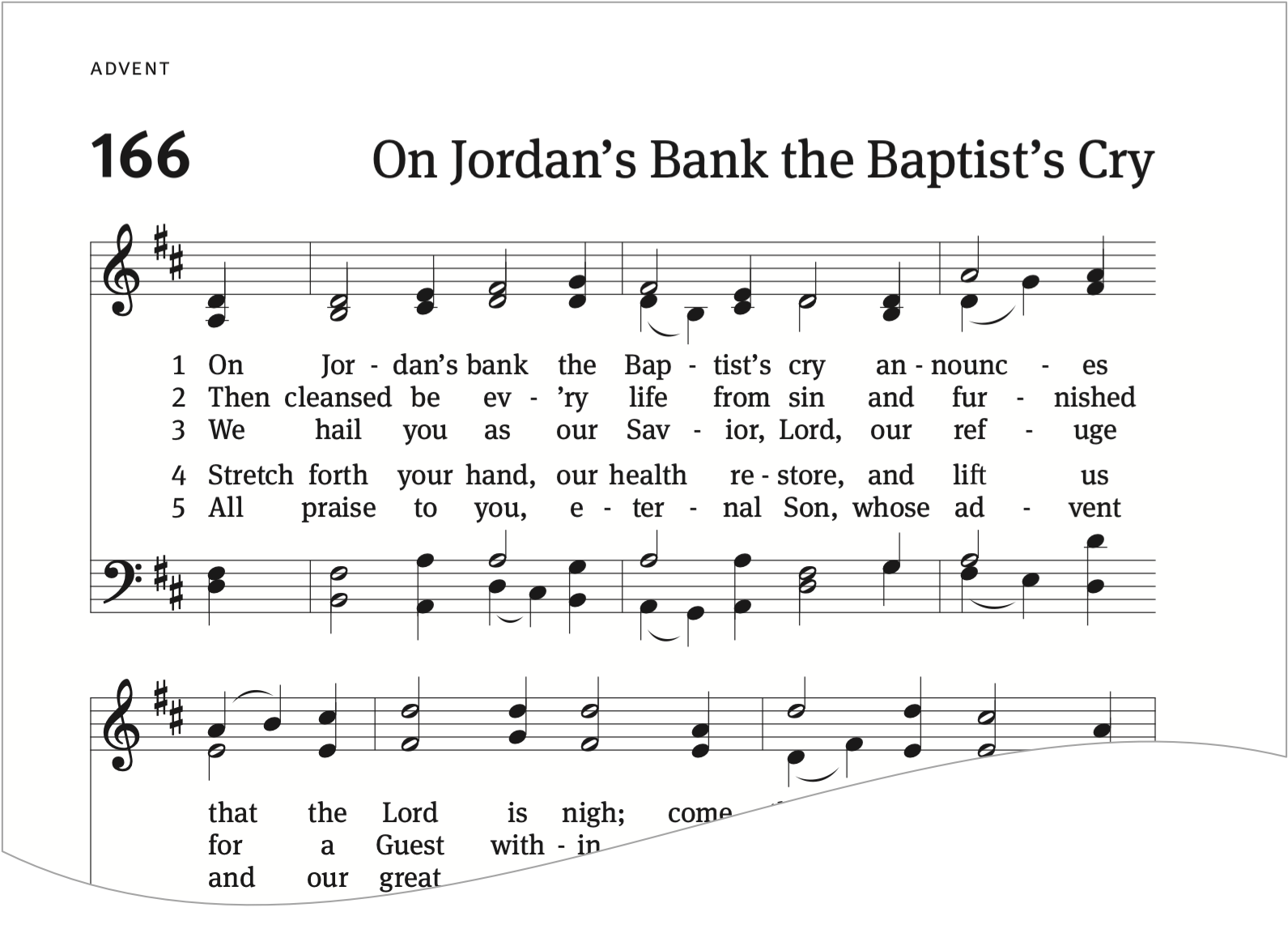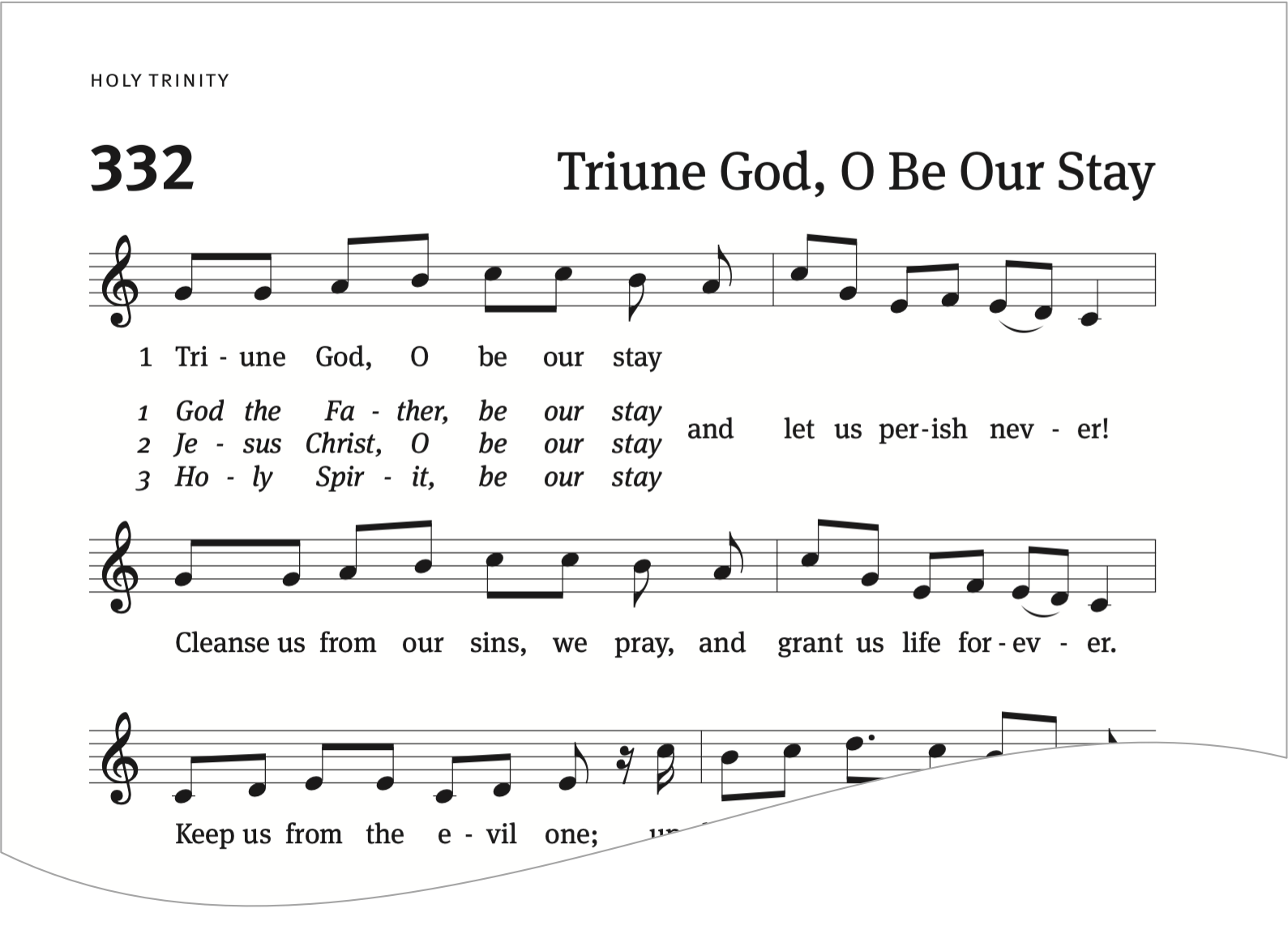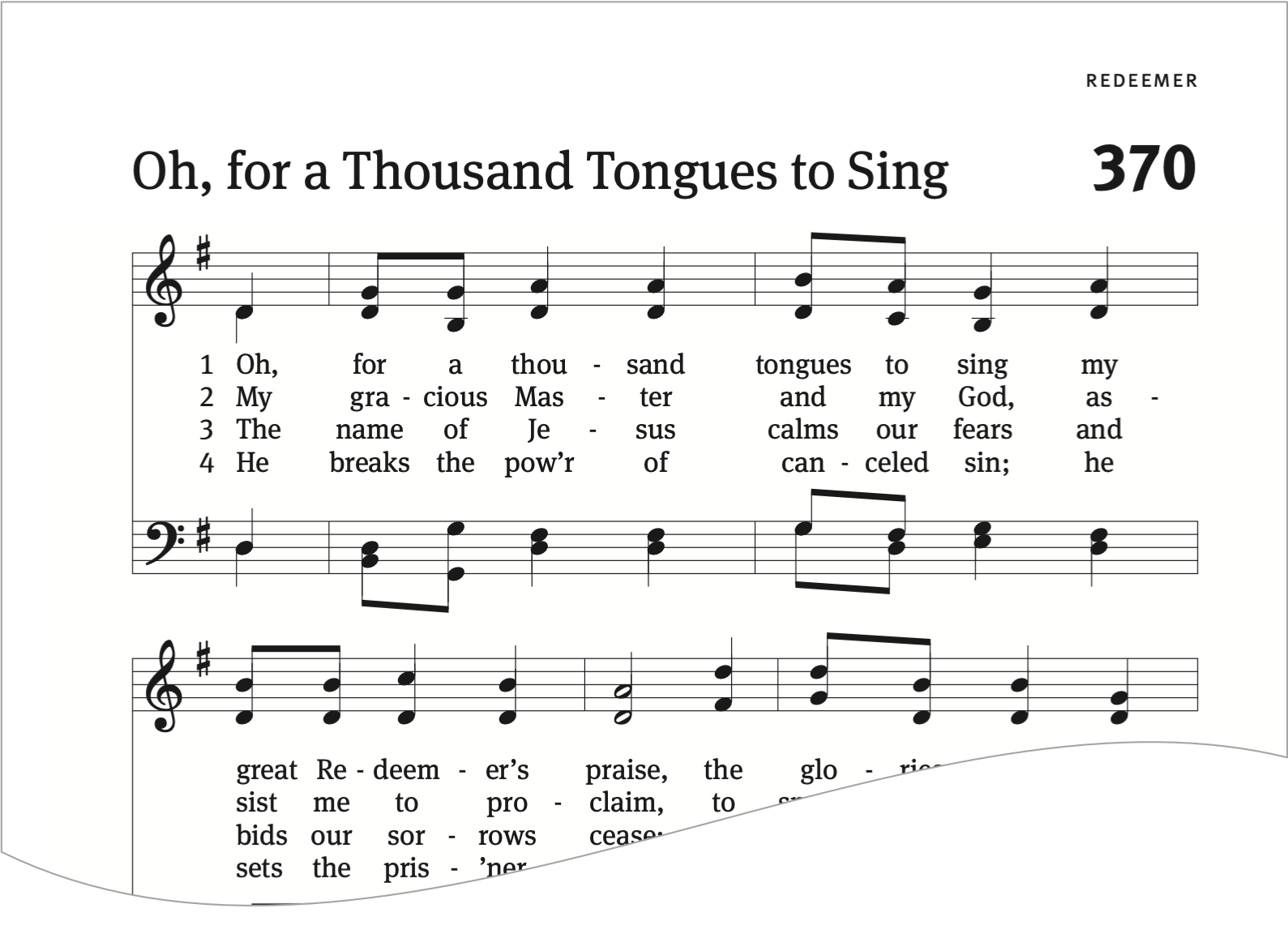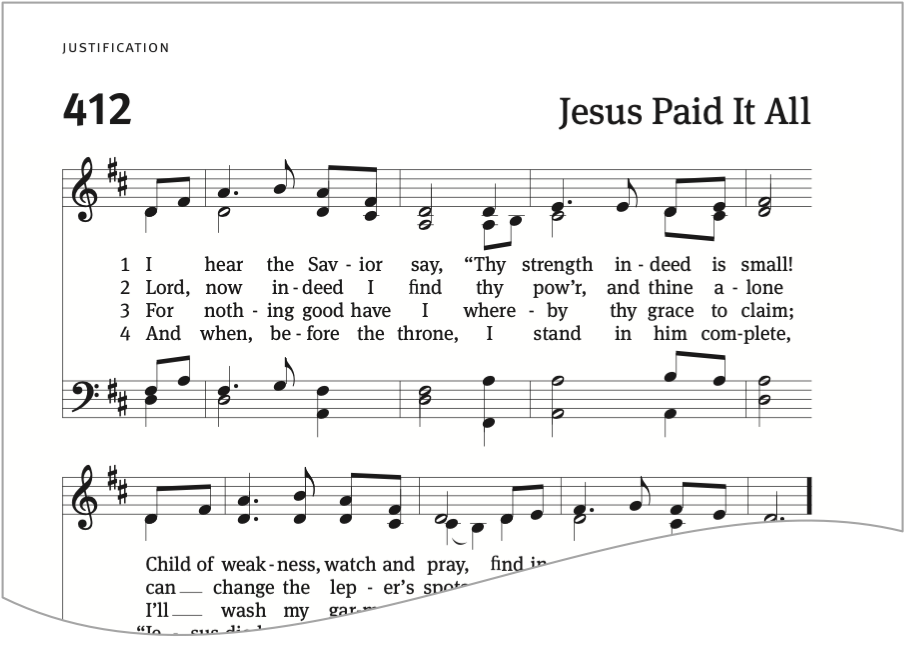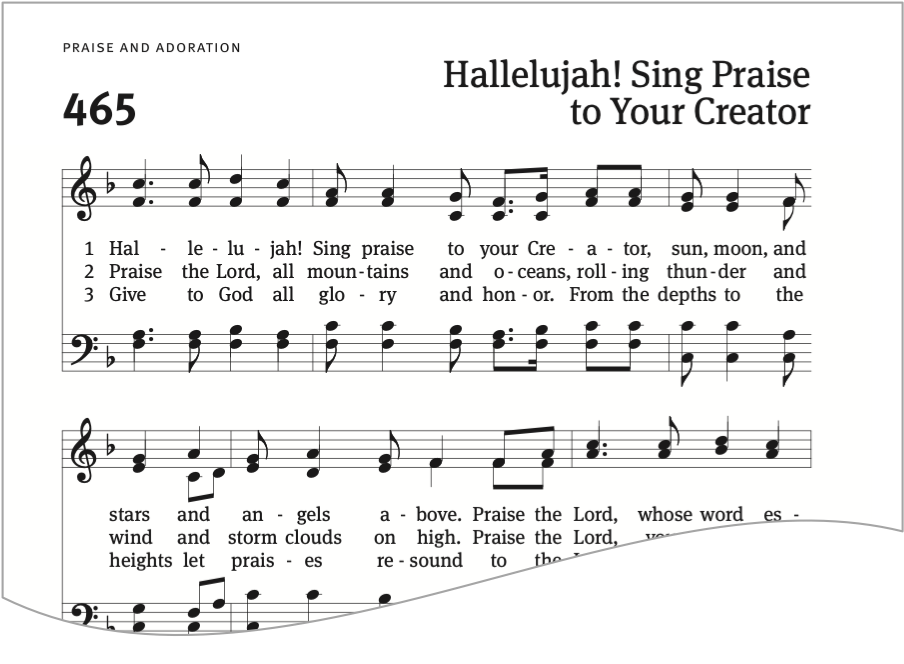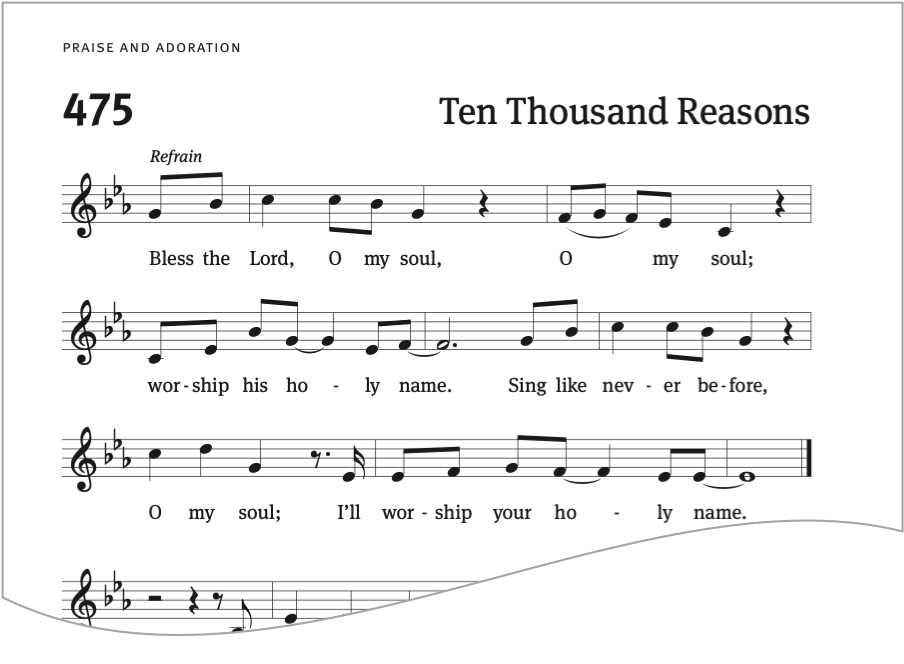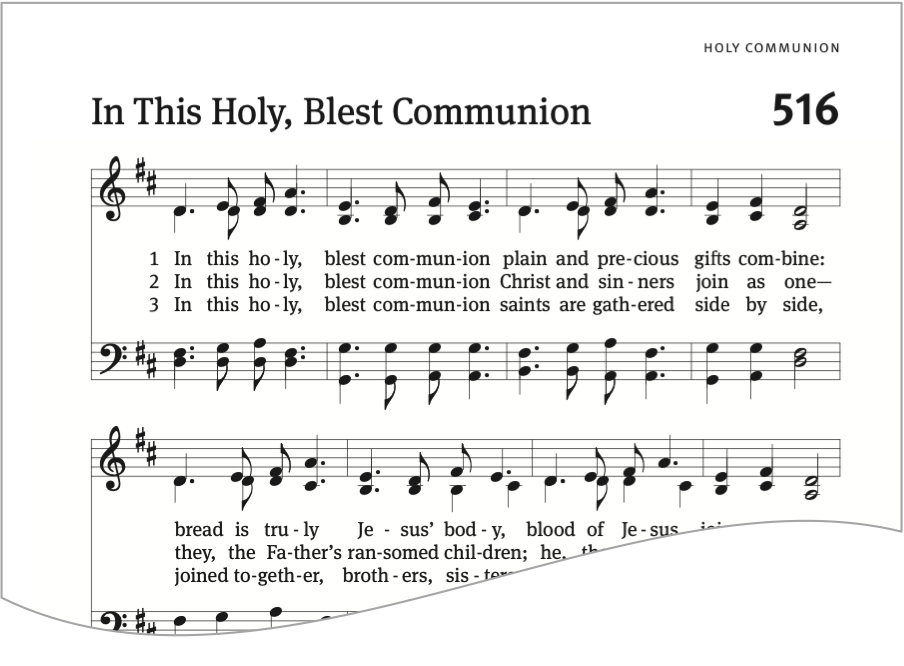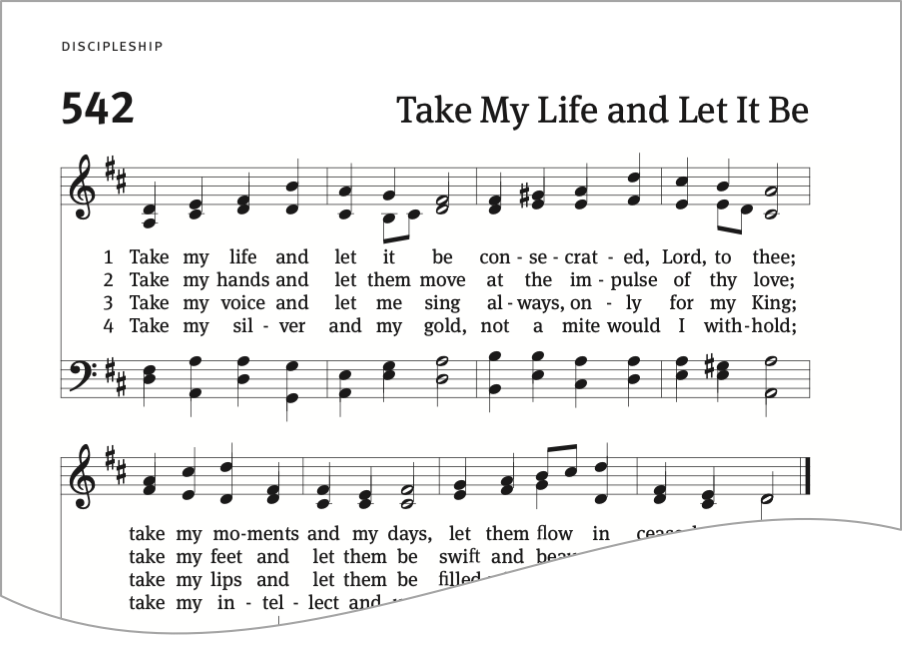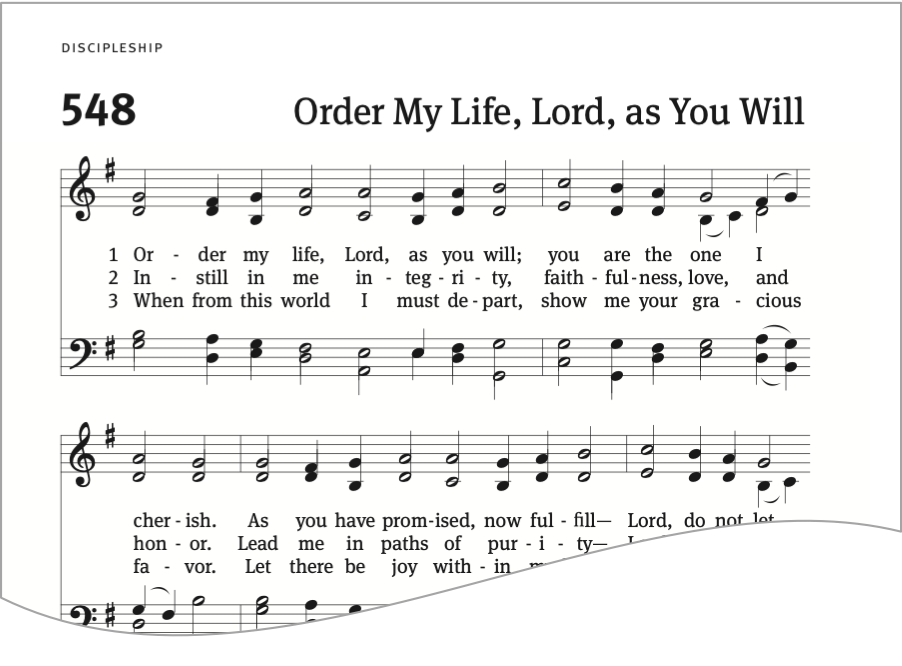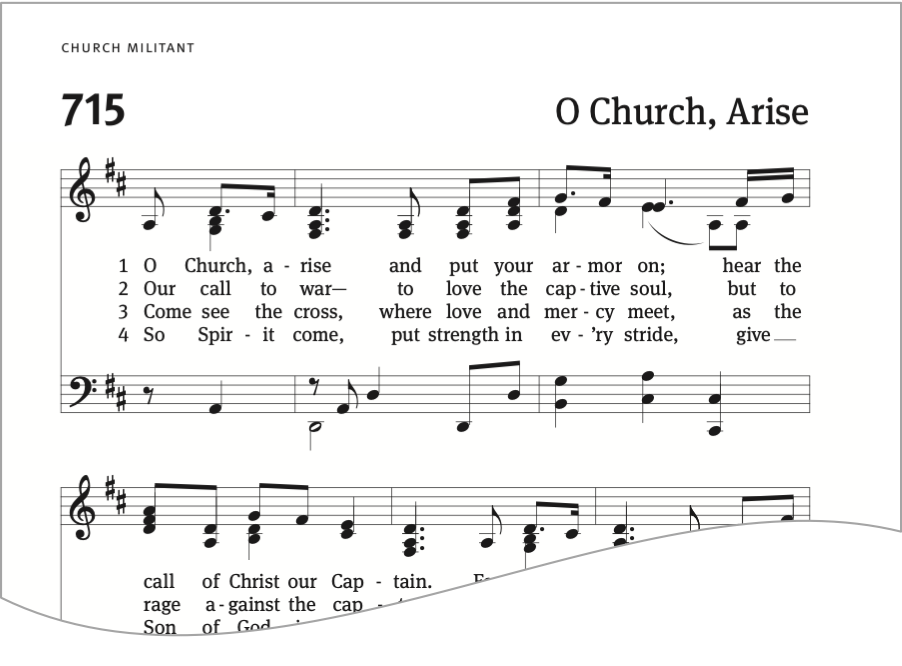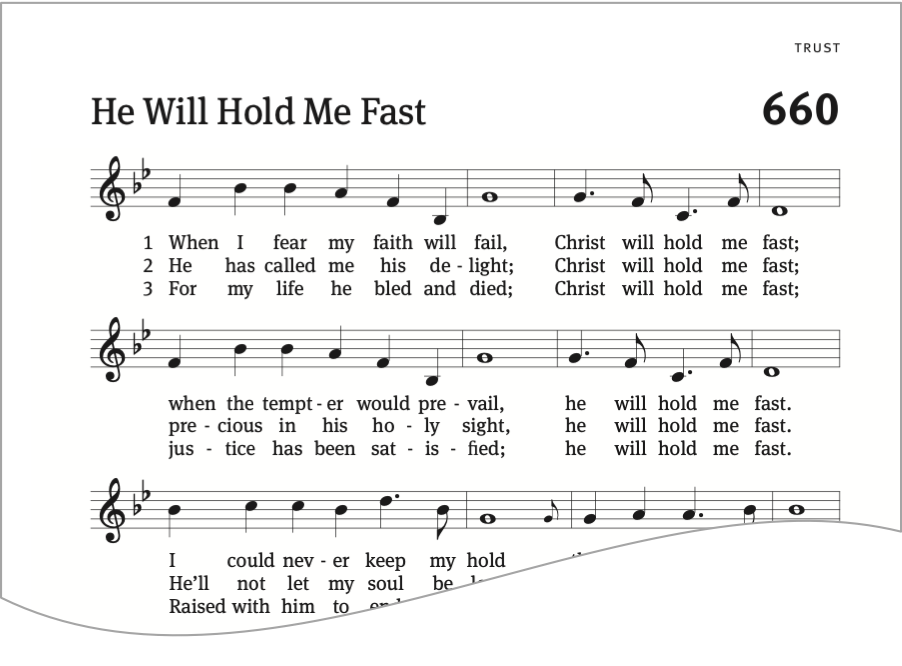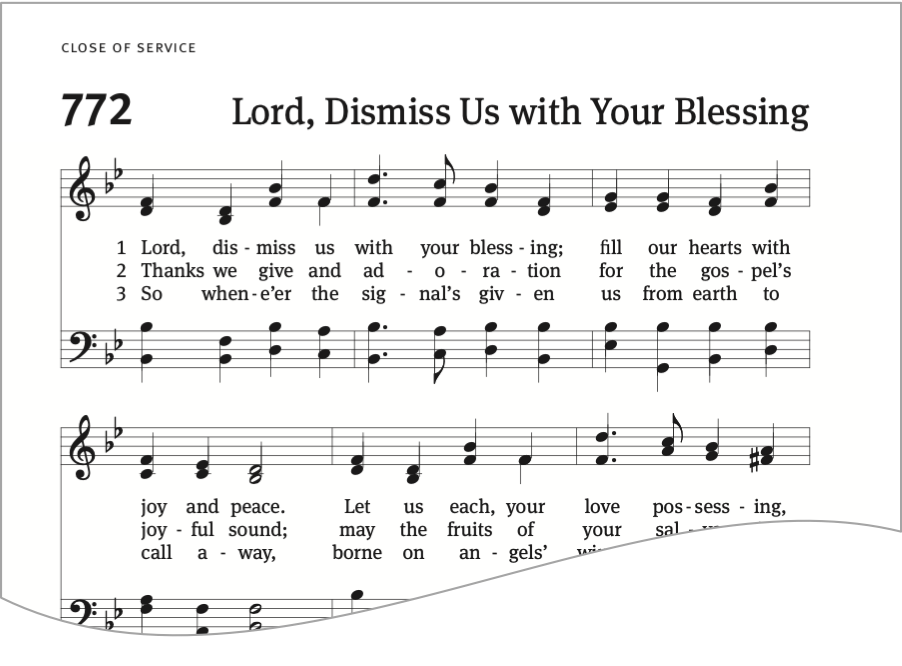PREVIEW
Music has a unique ability to touch human emotion with a finger of sound. Not surprisingly, many view music’s primary purpose as touching human emotions. But the Church’s song needs to be more than a mover of emotion. Why? Because the human creature is more than the ebb and flow of our emotions.
God also created us with the gift of reason. Christians are blessed as they place this gift into the service of the gospel. The Scriptures must be carefully read. Scriptural doctrine must be accurately taught. The message must be personally understood.
During the Reformation, Martin Luther set his sharp mind to the task of translating the Scriptures into the language of the common people. Luther also set his musician’s heart to the task of providing a new song for the people to sing. In 1524, the first Lutheran hymnal, the so-called Achtliederbuch (Book of Eight Songs), rolled off the printing presses. The eight hymns in this slender volume served a grand purpose:
Several Christian Songs, Hymns of Praise and Psalms, in Accordance with the Pure Word of God, from Holy Scripture, Produced by Various Highly Learned Individuals, for Singing in the Church, as in Part Is Already the Practice in Wittenberg.
Articulated in that title and rhymed in the individual stanzas, one discovers this noble purpose for Lutheran hymnody: teaching the saving doctrine of Christ. Through these eight hymns, hearts were touched because Christ himself was proclaimed. Christ was at the center of the Achtliederbuch.
The hymns in this Preview already outnumber those in the Achtliederbuch. The styles of music have also changed. But much more remains the same: These hymns will touch God’s people emotionally, teach the Scriptures accurately, and proclaim the riches of the Savior musically. May it please the Lord of the Church for us to use these hymns—and hundreds more like them that will follow—as preachers and teachers of Christ to a generation yet unborn!
A Singer’s Book
The hymns of Christian Worship: Hymnal are formatted on the page to benefit singers. Here, the traditional Advent hymn “On Jordan’s Bank the Baptist’s Cry” has a straightforward four-part harmonization. Some worshipers may wish to sing this chorale-type hymn in parts. Including up to five stanzas inside the music staves is intended to benefit the singer.
Christian Worship: Accompaniment for Hymns (not shown) is a separate and different volume. Its pages are formatted for the benefit of the keyboardist. Stanzas between the musical staves are limited to a maximum of three so that the staves stay closer together. The music in the accompaniment edition is also scaled larger than the music in the pew edition so that the accompanist can more easily read the music when it is on a music stand 2 to 3 feet away.
-
Over four hundred hymns from Christian Worship (1993) and Christian Worship: Supplement will be included in the pew edition of the new hymnal.
-
Hymns with up to five stanzas will have the text inside the music staves for the benefit of worshipers who want to follow the melody more closely or who wish to sing in parts.
Timeless Hymns
“A Child Is Born in Bethlehem” is an example of how great Christian hymns are truly timeless. The hymn (both Christmas and Epiphany versions) has a 13th-century Latin text, a 13th-century tune, an early 17th-century harmonization by Lutheran composer Michael Praetorius, and a 21st-century English translation. The singing of the assembly is supported equally well by organ or a lively piano and guitar ensemble.
-
The hymn corpus will include classic and ancient hymns that are new to us.
-
A new approach to numbering starts the hymns at 151 to avoid the confusing overlap of page and psalm numbers.
This early 19th-century text, which appeared in The Lutheran Hymnal and in Christian Worship (1993), appears in our new hymnal with a fresh new tune by a Lutheran composer. The music comes from a choral arrangement, so this hymn will benefit from readily available organ, brass, and choral parts to add to the congregation’s song. Especially useful for personal devotions, Bible passage references will appear at the bottom right corner of every hymn.
-
Clear and attractive typographical hierarchy improves clarity, legibility, and scannability of hymn headers.
-
Bible verses relevant to the hymn are offered for reference and devotional purposes.
Melody Lines and Common Tunes
Melody-only hymns do more than save space in the printed book. Some hymns are not written for singing in parts. Others are intended by the composer to be sung in unison.
For example, “Triune God, O Be Our Stay” is based on a 14th-century German litany and was originally sung as a 16th-century chorale (fourpart hymn). Today the hymn is often overlooked. Nevertheless, this is a classic Lutheran hymn arranged by Luther’s close colleague Johann Walter and published in 1524, just after the first Lutheran hymnal. An accessible presentation designed to assist singers continues to give this work an important place as a festival hymn to the Holy Trinity—well worth learning, retaining, and singing.
-
Various types of hymns will appear with the melody only—especially when beneficial for the singer.
-
AZMON is the most common tune to carry the text of “Oh, for a Thousand Tongues to Sing.”
Modern Music with Strong Texts
Stuart Townend has often teamed up with Keith Getty to present to the Church modern hymns that are very focused on the grace of God and the rescue from our sins that Jesus has gained for us. Christian Worship: Hymnal will have a strong showing of the best modern hymns available. Most modern hymn writers compose for the piano. Simply put, many piano arrangements won’t fit on two pages or include so many notes that the text is almost lost within the music. In such cases, while the hymnal pew edition may present only the melody or a four-part (SATB) version of a hymn (as shown below), Christian Worship: Accompaniment for Hymns will always include the full piano score for hymns that have been written for piano.
-
A modern hymn by Stuart Townend gives beautiful expression to the truth of the gospel.
-
A four-part arrangement allows for various types of keyboard accompaniment.
Charitie Lees de Chenez, a pastor’s daughter, was born in the county of Dublin, Ireland, June 21, 1841. By her early 20s she had already written a number of hymns, and by the time she was 26 her hymns had been gathered and published. During its research years, the Hymnody Committee ranked “Before the Throne of God Above” as one of the strongest texts it had come across. Modern musician Vikki Cook provided a beautiful new tune in 1997. As with many of the modern hymns, arrangements for piano and other instruments will be readily available for this outstanding hymn.
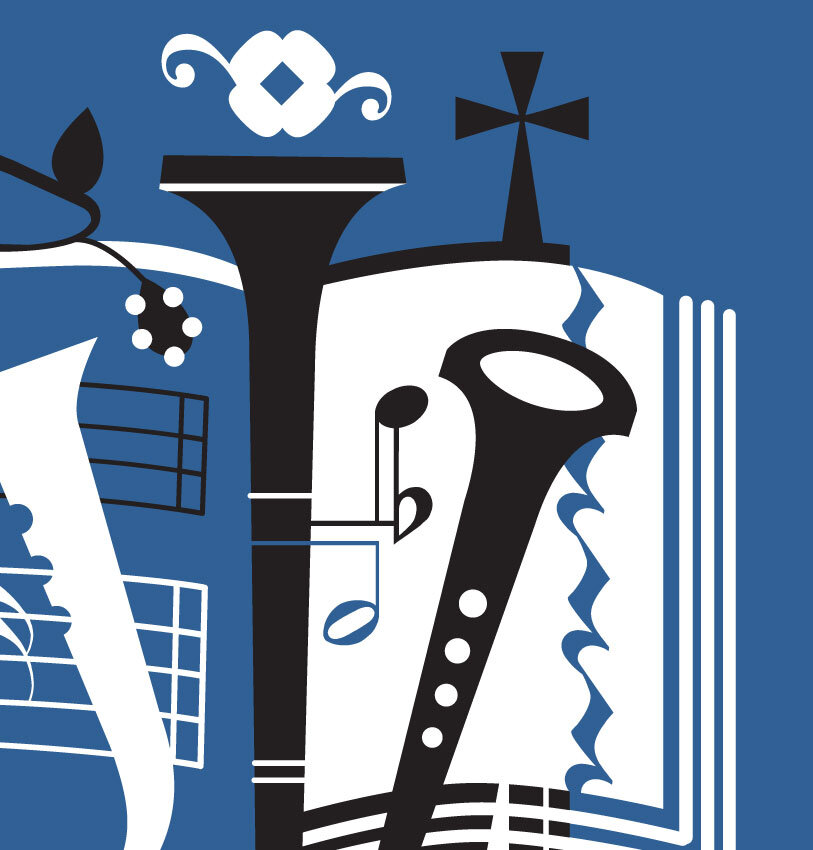
Musicians will have access to a structured database of additional musical materials available for purchase in a variety of formats that will fit well into their existing paper-based and digital workflows.
American Hymn Writers
Modern hymn writers are not shying away from ancient case, Christian worship leaders Matt Boswell and Matt Papa made use of a line from an old John Newton (“Amazing Grace”) sermon—“our sins are many, but his mercies are more”—to craft an excellent new worship song with many scriptural allusions. The piano score will appear in Christian Worship: Accompaniment for Hymns. Arrangements for other instruments will be available in Christian Worship: Musician’s Resource.
Published in over seven hundred hymnals, this traditional 19th-century American hymn offers a strong, clear text combined with accessible music.
During years of extensive research, hundreds of modern hymns were reviewed. Some of the best will appear in Christian Worship: Hymnal. “His Mercy is More” is one such example.
Psalm Paraphrases
Music from around the world reminds us that we stand together with all fellow believers in the Holy Christian Church. The Indonesian hymn below is based on Psalm 148.
Jonas Myrin and Matt Redman authored and composed the popular modern hymn below based on Psalm 103. Our approach to the inclusion of modern hymns can be reviewed in an excellent and more comprehensive treatment of the topic elsewhere on this website.
-
We include some modern songs that have become popular across English-speaking Christianity.
-
In a handful of instances, some of the verses in verse/refrain songs are challenging to sing. Some congregations may have a soloist or a small choir sing these verses, while other congregations will learn and ultimately sing the entire song in unison.
Lutheran Sacramental Emphasis
Lutherans will hear in catechism and Bible information class about the three communions that take place in Holy Communion. This hymn, with a new text and tune, makes use of the verb “join” in each of its three stanzas to give expression to these communions: (1) Christ’s body and blood are joined with bread and wine; (2) Christ the Savior intimately joins with individual communicants, granting them forgiveness in this sacred meal; (3) communicants join in fellowship with one another based on their shared beliefs in the teachings of God’s Word.
-
SUO GAN is a well-crafted tune for which hymn writers have just begun writing texts.
-
Christian Worship relies heavily on Lutheran authors for scripturally accurate texts on the sacraments.
Devotional Hymns
Fresh music and the texts of Luther’s prayers, set as rhymed verse, combine to give Christians of all ages a lovely hymn for morning and evening prayers.
-
Luther’s Morning and Evening Prayers are now set to music for devotional singing.
-
This is a dual-purpose hymn perfect for beginning and ending the day, whether in public worship or personal devotion.
Alternate Tunes
When we become familiar with a hymn tune due to its publication in our hymnal, we shouldn’t lose sight of the fact that other Christian churches (and some of our own members) may be familiar with the same hymn set to a different tune. A handful of hymns are printed with the option of two different tunes.
New Translations and Authors
Some modern hymns are tremendous in the way they capture the message of the Christian gospel with new phrases and fresh music. Some hymns that are tremendous are actually older hymns with an updated translation, reminding us of the faith we have in common with Christians from ages past.
In The Lutheran Hymnal, the tune HERR, WIE DU WILLST was tightly connected to a text entitled “Lord, as Thou Wilt, Deal Thou with Me.” That text has been updated under the title “Order My Life, Lord, as You Will” and is still paired with a tune that traces back to Strassburg in 1525.
Lutheran author Jaroslav Vajda wrote a fine text on the topic of Christian training of the young. Lutheran musician and composer Jeremy Bakken has provided a new tune and musical arrangement to bring this new Home and Education hymn to our churches.
Modern Favorites
The four hymns by Stuart Townend and Keith Getty published in Christian Worship: Supplement were well-received. Christian Worship (2021) will include more strong, scriptural songs written by these gifted hymn writers.
Time-Honored Texts, Fresh Music
Hymn writers continue to find that older, tried-and-true texts retain their value over centuries of time. Presenting these older texts with new music is a trend that has been steadily gaining traction over the last two to three decades. In “He Will Hold Me Fast,” Matt Merker has presented new music for 19th-century author Ada Habershon’s fine text on trusting in Christ’s promise to never let go of us.
-
This hymn is an adaptation of a choir anthem. Having a choir sing the anthem several times is a good way to introduce the hymn to the congregation.
-
Melody-only arrangements occasionally appear in the hymnal when the original score is too lengthy. Less than 15 percent of the hymns in the new hymnal will appear as melody-only.
Beloved Texts and Tunes
A new hymnal is not all about change. Those charged with producing the new hymnal have sought to be very sensitive to music that people are familiar with, texts that people have memorized, songs that people have long held dear, and hymns from hymnals that have been around longer than most of us have been alive. While a new hymnal will have plenty that is new, two-thirds of the hymns are those that Lutheran worshipers have loved and sung all their lives. We will continue to sing those dear and cherished hymns, and as God allows, we will also pass them down to a generation yet unborn.

